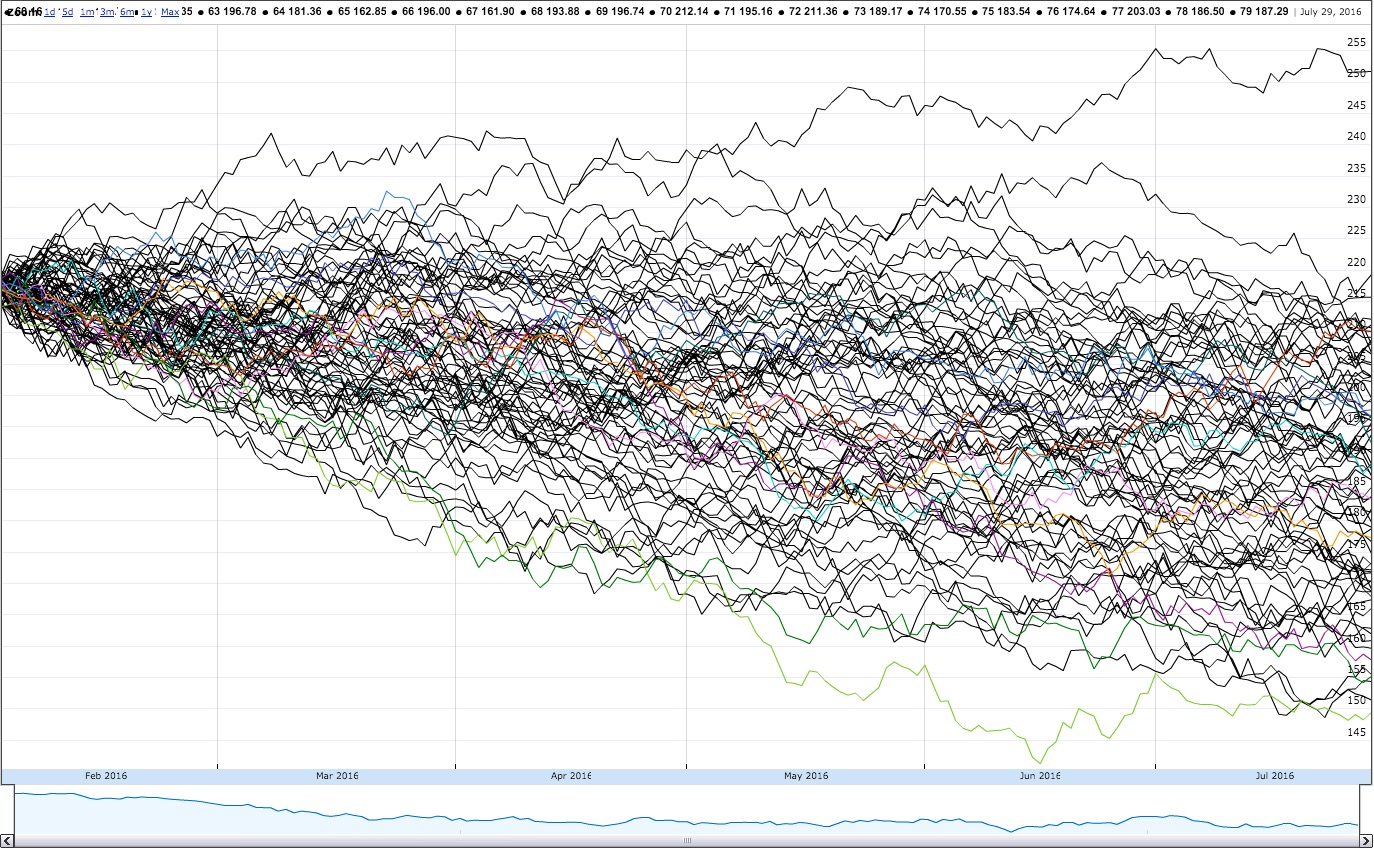What We Are Reading
Steven Jonas
February 2, 2016
Articles
The DIY Scientist, the Olympian, and the Mutated Gene by David Epstein. There are several surprising twists in this story of a non-professional scientist named Jill Viles, who made an important discovery about her own rare genetic disorder. What inspired me mostwas Viles’ tenacious reliance on her own capacity to reason, even in the face of skepticism from professionals who had less knowledge (though more confidence) than she did. Eventually, she connects with highly technical scientists whose research direction she influences with her ideas. Epstein got a fantasic quote from one of them when he asked the scientist if this has ever happened before. “In my life, no,” he says. “People from outside coming and giving me hope? New ideas? I have no other example of this kind of thing. You know, maybe it happens once in a scientific life.” I found myself wondering if this kind of thing will be less rare in the future. –Gary
A Drug to Cure Fear by Richard A. Friedman. This article intersects two of my interests that stem from my own self-experimentation. From my stress tracking I realized that many of my reactions in my day-to-day life are influenced by traumatic memories. From my spaced repetition practice I learned how memories can change over time through retrieval and consolidation. A study done in the Netherlands suggests that a memory can be decoupled from an associated fear response by using propranolol which blocks the effects of norepinephrine, a chemical that strengthens connections in the brain. The study has yet to be replicated, but hopefully it will increase our understanding of trauma. -Steven
Internet of Things security is so bad, there’s a search engine for sleeping kids by J.M. Porup. Ever since doing a research project on data flows for our first Quantified Self symposium we’ve had what you might describe as a below average level of confidence in the security and reliability of information traveling outside the immediate context of its collection, now that APIs connect to APIs connecting to yet other APIs. Still, even I was surprised by the recklessness and potential harm described in J.M. Porup’s brief account of a search engine that displays random pictures from internet connected consumer cameras around the world. –Gary
Algae bloom toxin linked to Alzheimer’s, other diseases by Amy Kraft. One consequence of the climate change and the depletion of fish stocks in ocean’s is the increase occurrence of algae blooms. Ethnobotanists found a correlation between algal blooms and neurodegenerative diseases among remote populations in the Pacific. New research suggests that cyanobacteria, the microorganism in these blooms, has a neurotoxin that can cause neurodegenerative precursors that develop. This neurotoxin enters the human food chain as it bioaccumulates in fish and shellfish. -Steven
Show&Tell
Glass Half Full Succeeds in Unwinding Upsets by Paul LaFontaine. Most people have moments of irritation or worry throughout the day. Paul wanted to find out what worked better as a response to these moments. Option A was to step back and observe his emotions in a manner similar to that taught by some schools of meditation. Option B was to figure out the source of irritation or concern and think of a positive angle to the situation. What is great about this post is the very simple but illuminating experiment that he devised to explore this question. -Steven
Finding My Optimum Reading Speed by Kyrill Potapov
As an English teacher Kyrill Potapov spends a lot of time working with 12 year old kids who are trying to improve their reading, writing, comprehension, and analytical skills. In this talk, he explores a remarkable method of speed reading, called Spritz, that promises to let you “read Harry Potter in three hours” with full understanding and recall. Could such a promise possibly be true? –Gary
Heart Rate Variability, Body Metrics, and Cognitive Function by Justin Lawler. This is a great examination of how Justin’s HRV measurements correlate to all other personal data he has collected. -Steven
Using Spectrograms to Visualize Heart Rate Variability by Randy Sargent
Randy’s idea about using spectrograms, normally used for audio signals, to create a portrait of your own time series data, is completely novel as far as I know. –Gary
Visualizations
Spurious Correlations by Tyler Vigen. An entertaining collection of unrelated facts that can be correlated with a high degree of confidence. -Steven
Hackers Diet, FIRECalc and weight loss by u/Thebut_. This chart is a mess, but the idea behind it is fascinating. This reddit user was inspired by FIRECalc, a financial tool that “projects your future assets based on historical market data” and tried to apply it to his weight data. Instead of giving a single projection, the tool shows a range of possibilities. This is similar to how Baseball Prospectus’s PECOTA system uses a weighted range of possibilities (probability distribution) rather than a single guess (point estimate) for forecasting a prospect’s future performance. I would like to see more of this kind of thinking applied to personal data. -Steven
Projects
Darwin Tunes by Bob MacCallum, Armand Leroi, Matthias Mauch, Steve Welburn, and Carl Bussey. A fascinating project that treats pieces of music like organisms that can mate and reproduce based on listeners’ votes. These audio loops started off as random noise, but as the generations moved into the thousands, the presence of chords and higher order melodies emerged. At this point, there have been over 8700 generations. You can take part yourself! -Steven
On the QS Blog
Quantified Self Public Health Symposium
Explaining Nightscout by Lane Desborough
From the Forum
Central repository for QS data
Best Pulse Oximeter of all-night logging
Open Source wearable bio-sensor: TrueSense Kit
How about quantifying and tracking your blood alcohol?





